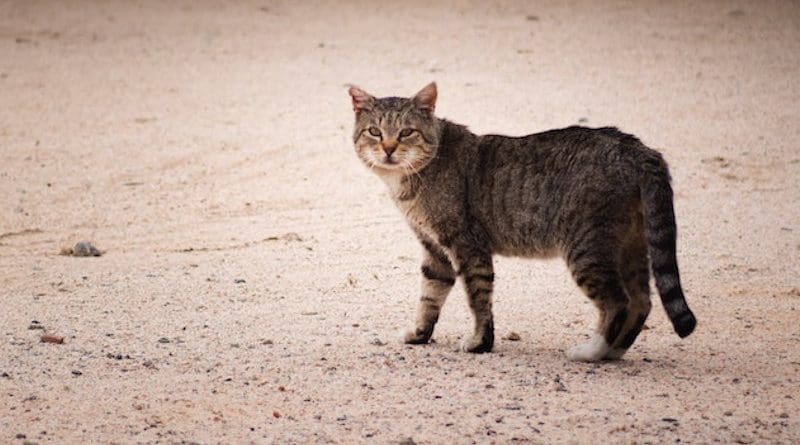Solving The Feral Cat Problem In United States
By IDN
By J W Jackie
It is estimated that between 60 and 160 million feral cats roam the United States. Generally defined as unsocialised “wild” cats, their ability to reproduce quickly has begged for the problem to be addressed for quite some time. With non-profit organisations working to address the issue in a humane way, groups across the country are actively working to bring the issue to light and further address the problem in local areas. How to do this humanely is a primary topic.
Due to their unsocialised nature and natural hunting instincts, feral cats are often viewed as diseased, tend to avoid human contact, and pose a threat to the birds that they hunt. However, they also face a considerable amount of danger themselves, and generally don’t live long due to predators, road accidents, and other threats — including untreated wounds and diseases like feline AIDS, effectively making their lifespan quite short. With a cat’s ability to reproduce quickly, it has become very clear that the feral cat population desperately needs to be addressed.
Trapping and killing feral cats might be seen as an option by some to address the feral cat population, but this is not only an inhumane way to handle the matter; it also won’t aid in eradicating the issue in the long term.
One proven way to manage feral cats is via trap-neuter-release programs (TNR), which involve catching the cats in order to sterilise and release them, thus reducing the volume of feral cats over time by preventing reproduction. Efforts like Animal Save’s Feral Cat Program works to implement TNR, as well as providing another solution involving housing feral cats in disused barns.
While TNR programs like this exist across the country, the issue of whether or not it’s put into effect still arises. In Virginia, for example, a bill that would acknowledge existing TNR efforts and clarify that it is legal for trap-neuter-release programs to be carried out has been tabled until next year.
Because of this, publicly funded animal control efforts aren’t legally able to trap-neuter-release, thus leaving the job to non-profit groups like Save A Dog Save A Cat (SADSAC) to step in. Meanwhile, in Florida, a Clay County committee met to discuss how they’d address the feral cat population in Orange Park, and are also considering TNR as an option, as well as euthanasia.
Another solution
While TNR efforts aim to help reduce the feral cat populations, adopting a stray cat can be an option for those willing to help prevent more cats from ending up on the streets and becoming feral.
For those that wish to adopt a stray (one which likely hasn’t been on its own for very long), there are ways to go about doing so safely. With working from home becoming more of a ubiquitous concept within the past year, adopting a stray cat may be easier and more realistic for many people, effectively allowing for more time to watch over and care for a new pet.
An additional benefit is that studies show that working from home with a pet decreases loneliness and depression. Perhaps one of the most important things you can do to adopt a stray safely and humanely is to provide them with the space to hide as they adjust to their new environment, and to have patience with them as they settle in.
The feral cat population in the United States has long been an issue, and the best way to manage it continues to be elusive. Trap-neuter-release programs and adoption offer two ways to manage the issue, however, and there is hope that the problem will decrease over time.

